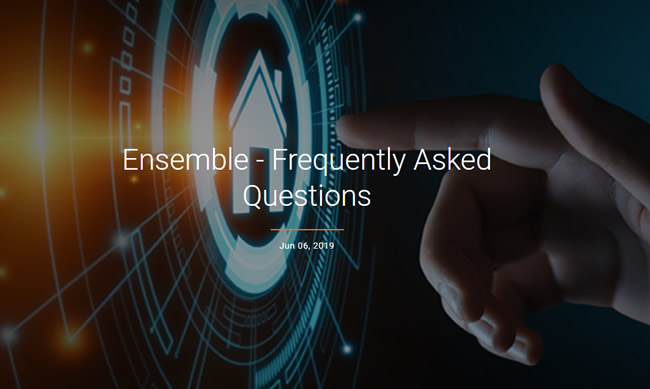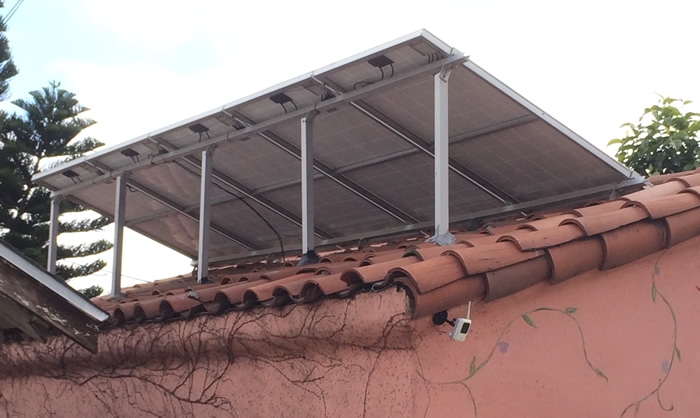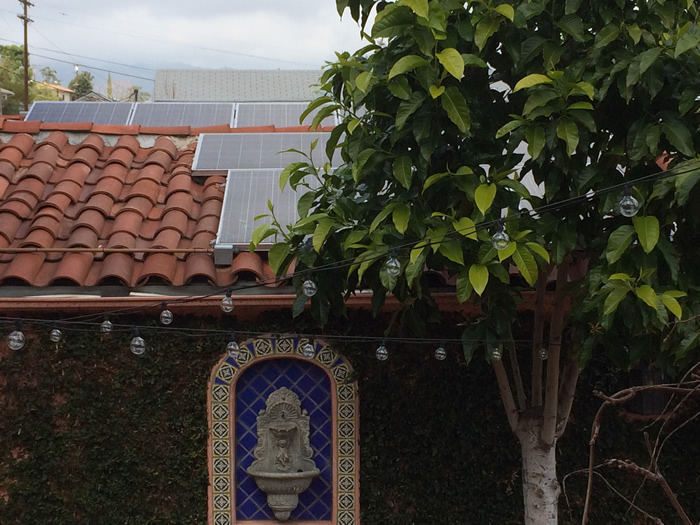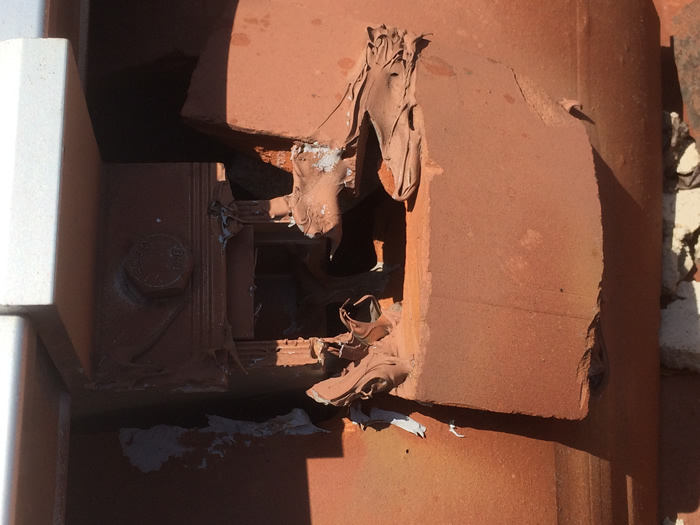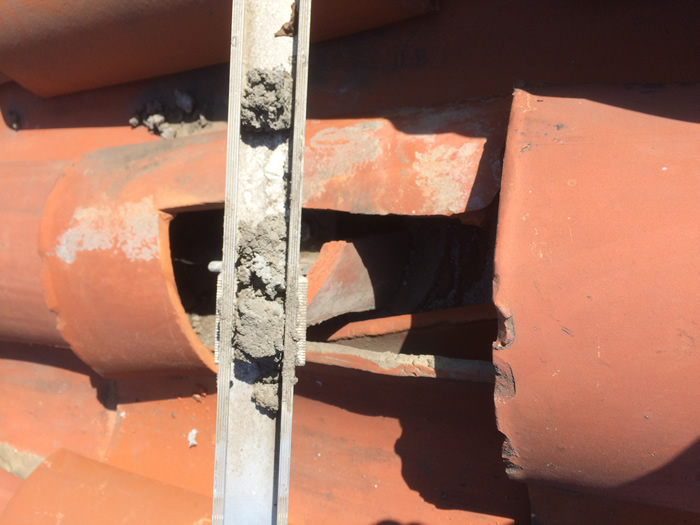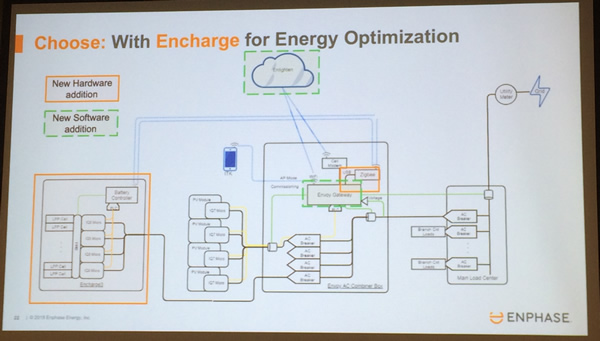Category: "Residential Solar"
06/28/19
Categories: All About Solar Power, Residential Solar, Energy Storage
Ensemble Rollout Coming into Focus
On the heels of their video release last month, the folks at Enphase have now published an FAQ page on the entire Ensemble system. Here are some highlights…
Perhaps the most exciting item is that they are expecting deliveries around Christmas time – what a great gift! That said, I’m sure quantities are going to be limited at least initially. To that point, however, it looks like there will be a “pre-order” option - though the FAQ page is silent on details or pricing.
The most disappointing answer is that the system will not be compatible with S and M series microinverters, although they are planning an upgrade path, similar to the “Early Adopters” program that they had earlier this year.
Happy to hear your feedback - obviously we are following developments here closely, watch this space.
05/31/19
Categories: All About Solar Power, Residential Solar, Energy Storage
Enphase Releases Video on IQ8 and Ensemble
Our friends over at Enphase have posted a video to YouTube explaining in non-technical terms what the IQ8 will do for solar consumers, both in the developing world, and here at home. Here’s the video and some quick thoughts about it.
To quote the video, “Isn’t it cool?" Well yes, as we’ve been saying for quite some time here, this is waaaay cool. But here are some other takeaways from the video:
- Strong endorsement for interoperability with the IQ6’s and IQ7’s that we have been installing for the past year and a half. But no word about how this will work with earlier versions.
- The Enpower switch - which is needed to legally isolate you from the grid - is pictured, but still no details.
- A hint at pricing would be nice!
As far as I’m aware, this is the first, general-public-facing details about the IQ8 and Ensemble that Enphase has released. It went live on May 28, and three days later is sitting on just under 15,000 views, with 154 up-votes to 6 down-votes. (What is there to down vote? Gee, SEDG, troll much?)
This will be very cool technology for our clients, but it will truly be life-changing for folks in the developing world or any place where the grid is unreliable.
Watch this space.
04/25/19
Shortcut Solar Specialty: Roof Leaks!
While those crazy folks over at Shortcut Solar have many distinguishing characteristics, certainly one of the most commonly displayed is just plain shoddy work—and one of the most devastating consequences of shoddy work is a leaky roof. Check out our latest tale of cleaning up after Shortcut Solar…
We recently got asked to give a homeowner a quote for removing an existing solar installation from her garage because the roof was leaking and needed to be replaced. (The array was there when she purchased the home.) Here’s what we found when we got there: ten panels, installed in a way that only Shortcut Solar could do, check it out…
Ah yes, everyone’s favorite mounting method—not!—reverse tilt on a north sloping roof! Never mind that you are voiding the warranty from the racking manufacture, and putting tremendous strain on all of the components, but heck, it lets you get the panels in more or less the same plane as the south facing panels, right? Oh, and note the “flashing” method at the base of those columns: cement (and/or mastic), well known for its ability to flex with the torque forces that the wind will exert on this “solar wing” that they have fabricated.
But wait, that’s not all, check out the fate of the south facing panels…
Yep, they actually put the array behind a tree! (The homeowner told us that there had been a similar tree on the left of the fountain, but it died after the array was installed.) Truly the folks at Shortcut Solar were on a roll that day!
So, sadly, we set out to remove the array in advance of the roofer coming in to do their thing. (The homeowner generously donated the used equipment to a local city college to assist students in their PV classes.)
The details up on the roof were really appalling. Check this out:
That is an end clamp, attached to a rail that is actually below the level of the tile! The tile above it was “notched” but nothing, at least by now, was in place to keep water from pouring under the broken tile. (The little bit of red mastic is a nice, esthetic, touch!)
Or how about this thing of beauty: actually, it is kinda hard to know what they were thinking here. I can only presume from the concrete in the rail, that they tried to anchor a piece of tile above this, but failed completely.
The panels on the south face were not as awful (apart from being behind a tree), as they had removed the tiles in the area where they were doing their attachments and put down a torch-down layer of roofing material. But even then they could not be consistent–their single bolt attachments in some places had a 3″ lag screw, but in other areas they couldn’t be bothered and simply used a 1½” hex screw. ‘Cause, yeah, why would you care about actually getting into the rafters?
There can be no doubt that this installation was doomed from the day it was installed, and I hate giving such bad news to nice people like this homeowner.
This was in the City of Los Angeles – how on earth did this ever pass inspection? Sadly, with Shortcut Solar on the job, this is the type of work you can expect.
It doesn’t have to be like this. Building inspectors should crack down on this sort of nonsense. And potential solar purchasers need to do their homework better as well. Don’t just go with the smooth talker who shows up on your doorstep - he might be working for Shortcut Solar! Check out reviews, look for NABCEP certification, and talk to past customers. Together we can make Shortcut Solar, and their shoddy work, a thing of the past!
04/03/19
Categories: All About Solar Power, Residential Solar, Ranting, Energy Storage
Enphase IQ8 Update... UPDATED
UPDATE - We got a message back from Enphase about a viable approach to the whole-house connection issue discussed below.
The end of March found me in San Diego attending the annual NABCEP Continuing Education Conference. As part of being NABCEP certified, I am required to recertify every three years, and my third recertification occurs this year. The Conference is a convenient way to earn the credit hours needed as part of the recertification process.
While much of that is bone dry (such as a full day talking about the most recent changes to the National Electrical Code, made tolerable only by the wit of the presenter, Ryan Mayfield), or surprisingly cool (such as our discovery of Scanifly), nothing was more anticipated than our chance to attend a talk presented by Enphase titled, “Design and Specification of Grid-Agnostic Enphase Ensemble™ based Systems." (Enphase describes the Ensemble system as being “grid-agnostic” because it is intended to switch seamlessly between grid connected and grid isolated operation.) Here is our take…
The room for this talk, as was the case with a number of talks, was way too small for the number of interested participants. I arrived early and was rewarded with a seat. Late arrivals were SRO. The talk was presented by Peter Lum, with an assist from Field Applications Engineer, Nathan Charles.
Key Takeaways
For folks looking for just the highlights, here are some (in no particular order):
- Initial rollout of the IQ8 in the U.S. will be as part of the Encharge energy storage system
- Encharge will come in two basic flavors, a 3.3 kWh, 1.28 kW unit, and a 10 kWh, 3.8 kW - both with a peak surge output of 150% rated power for one second
- The 3.3 kWh unit will be 24″ high, 13″ wide, and 12″ deep, weighing 88 lbs, mountable either on the floor or the wall, and it can be mounted outdoors
- Cells are LFP, cooling is passive, and comms are - surprise - Zigbee
- The 3.3 kWh unit has four IQ8 microinverters inside, that are field replaceable should one fail
- The battery cells are not tied to any one microinverter; if a microinverter fails the storage capacity is unaffected, but peak output power is diminished
- Warranty will be for 4,000 cycles (100% DoD) or 10 years, whichever comes first
- For a microgrid to form, there must be roughly the same amount of IQ8 power as there is IQ6 or IQ7 power in the system
- Not compatible with M-series microinverters, “at launch”
- No word yet on pricing, anticipated deliveries to begin Q4
A Little More Depth
So those are some highlights, let’s talk about some details. The smarts inside the IQ8 is an Application Specific Integrated Circuit (ASIC) with some 5 million gates. As a result, the IQ8 is able to update its control vectors every 20 ns. Thus, the individual IQ8 provides the primary control over the microgrid, and there is no master/slave relationship. However, the IQ6 and IQ7 do not have that level of independent control functionality, and so they rely on secondary control, via the Envoy, to stay in sync with the microgrid.
As with its other IQ cousins, the IQ8 is a bi-directional inverter, meaning the same device that can be in an array, converting DC to AC, can be in the battery, converting AC to DC to charge the cells.
Keying off the 2017 NEC (which California will adopt come January), we were introduced to a new acronym: MID - which stands for Microgrid Interconnect Device, and is defined as, “A device that allows a microgrid system to separate from and reconnect to a primary power source.” (705.2) The Enphase MID is referred to as Enpower, and it essentially has three components: an automatic transfer switch, a neutral forming transformer (recall that the IQ series just uses the two hots, L1 and L2, so the NFT is necessary to power 120 volt loads when off grid), and a control device. Comms are - you guessed it - Zigbee.
Use Cases
There are two primary use cases for the new Encharge component, Energy Optimization, and Storage with Backup. Let’s look at each one in turn.
Energy Optimization
Energy optimization, or more to the point, Time-of-Use arbitrage, involves storing energy during the peak production portion of the day (instead of exporting it to the grid) and using it later in the day for local consumption. This becomes important as utilities - think SCE - switch to TOU rates where energy in the middle of the day is significantly cheaper than energy during the peak TOU period (more and more, something like 4-9 p.m.).
Our friends over at Energy Toolbase just blogged about, “A Historic Moment for Residential Energy Storage Economics: California’s new Time-of-Use Rates,” noting that for the first time it was possible to model a more economically advantageous system adding storage, than just solar alone. Which means that the Energy Optimization use case may pencil out on its own - though that is hard to say for sure until we have some actual pricing!
Enphase provided the following illustration (sorry for the lousy images, taken from the side with my phone!). You can click on the image to see a larger version.
On the far left is the Encharge 3.3 kWh storage system showing the four IQ8’s. To the right is an array built on an equal number of IQ7 microinverters - but note well, this is not a microgrid configuration. Why? Because it doesn’t have a MID, and per the 2017 NEC, you can’t have a grid-agnostic microgrid without a MID.
In the middle is the latest version of the IQ combiner box. (We just installed one of these and frankly, I’m not a big fan. The wiring for consumption CTs requires you to cross reference an unmarked connection block to the lid for the wiring diagram. This is going to be error prone, IMHO. Also the Envoy has been reduced to just a circuit board w/out its own case. Ok, it’s in a NEMA 4 box so the case is probably not needed, but if you are trying to operate it with the deadfront off (say during testing), you need to watch where you put your fingers! A false economy here, I’d say.)
Note the green boxes which denote updated software both in the cloud and in the Envoy. Also, the Envoy picks up a Zigbee device (to communicate with Encharge) to be attached to one of the two USB ports on the Envoy. (As we noted before, Zigbee is built into Encharge, though not called out on this slide.
This is super easy to set up as the Encharge just lands on one of the breakers in the IQ combiner. And while it may - assuming our friends at ET are correct - pencil out, it isn’t what all the buzz has been about, so let’s turn to that use case, shall we?
Storage with Backup
Ever since I made my pilgrimage to Petaluma last summer, the amazing microgrid has been the feature that everyone is eager to see. The good news is, we are closer! The bad news is, this isn’t going to be as easy as we had hoped. So here is the key diagram from last week: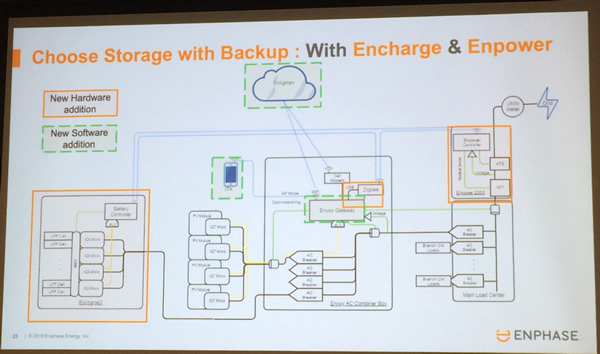
There is really only one change from the prior diagram and that is in the upper right hand corner, where the Enphase MID - dubbed the Enpower 200G, has been added. The switch is rated at 200 A (that is the significance of the 200, G stands for grid), and in theory could be an all home setup. In a grid outage, the Enpower ATF switches and the microgrid forms - automagically. Depending on the actual array and storage configuration deployed, will determine how much of the house loads could actually be powered here.
There is one fly in the ointment in this illustration. In many parts of the country, the utility meter is mounted outdoors and the distribution panel - the Main Load Center in the slide - is located indoors. In such a scenario, the Enpower MID could be wired in between those two components with minimal disruption or cost.
Alas, in California, at least in Southern California, that is not how we do things. 99.9% of the services that I have ever looked at consisted of a combination meter and load center “all-in-one". The rub here is that there is no easy way to physically interconnect the Enpower device between the meter and the load center. When pressed on that issue, Enphase - accurately, if not helpfully - pointed out that we would have the same problem with any such storage solution and the combo meter/load centers. True enough, but we have been talking about this product for a long time now, and you would like to think that they would have a clean solution in mind as to how to make this work by now.
UPDATE: I spoke with Enphase Field Applications Engineer Nick Dadikozian about the following possible solution. Assuming that the utility and the AHJ go along, you could add a separate meter socket and wire the line side to the service, with the load side of the socket connecting to the line side of the Enpower MID, and the load side of the MID to the load side of the meter socket in the combo panel, or if no way to do that, wire to the line side of the combo meter socket and install appropriately rated jumpers in lieu of the relocated meter.
Of course, another approach is to have a critical loads subpanel, with a breaker on the main panel and the Enpower in between. That, I suspect, will be the approach most commonly taken.
So there you have it – all that I could absorb from our relatively short session, and some follow-on conversations with Peter over the next couple of days. (My thanks to him for his patience in dealing with my myriad questions.)
Eager to hear your thoughts on how you will be using this system.
11/07/18
Categories: All About Solar Power, Residential Solar, Solar Repairs
Enphase announces Upgrade Program for Early Adopters...
One of the nagging concerns in the solar industry is what to do about those aging legacy systems? As systems age there can be reliability issues and finding compatible parts can be a real issue in a fast moving technology environment like solar power. Given all of that, we are pleased to announce the Enphase Update Program for Enphase Early Adopters. There is a lot to this program, including three distinct upgrade paths, so let’s break it down step-by-step…
Who is Eligible?
This program is dedicated to the earliest adopters of Enphase microinverters, specifically the M175, D380, M190, and M210 models. (Of the eligible microinverter models, Run on Sun only ever installed the M210.) System owners that have M215’s, M250’s, or S280 microinverters are not eligible for this program.
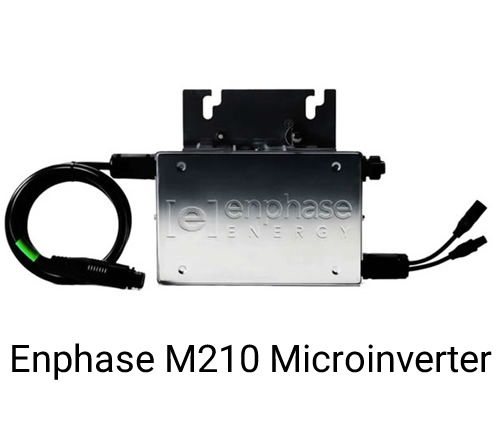 |
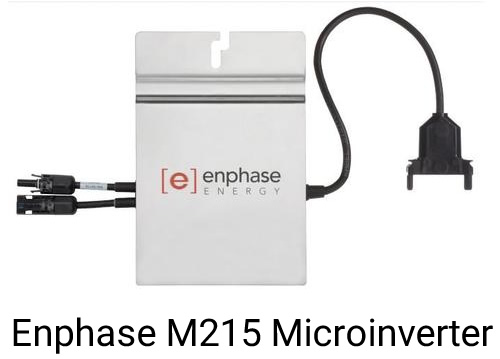 |
| The Enphase M210 qualifies for the upgrade… | While the subsequent generation M215 does not. |
What are My Options?
There are three upgrade paths with varying benefits, costs, and timing, however, all three offer full 25-year product warranties and a two year service agreement. The three options are: Microinverter Upgrade, Full-System Upgrade, and Next-Generation Upgrade - let’s take them one at a time.
Microinverter Upgrade
The most cost-effective option is the Microinverter Upgrade because it takes advantage of your existing solar panels that are likely still in good shape. This upgrade provides all of the following:
- New Enphase IQ7-PD - the latest generation microinverter, powered down to be compatible with existing, earlier generation systems.
- New interconnection cable
- New IQ Envoy with both production and consumption energy measuring devices* (CTs).
Legacy owners can purchase this equipment directly from Enphase for just $67.50/panel - a really great price. Removal and re-installation labor will vary widely based on various factors including the difficulty of the roof, the quality of the original installation, and whatever upgrades need to be done, probably on the order of $150/panel.
*Note that not all systems will be able to do consumption monitoring depending on the existing service panel configuration.
Full-System Upgrade
When microinverters like the M210 were being installed, available panel wattage was much lower than today, but with the advent of electric vehicles, homeowners are in need of more energy than ever. The Full-System Upgrade provides a way to gain from today’s higher power modules, but in a cost-effective manner.
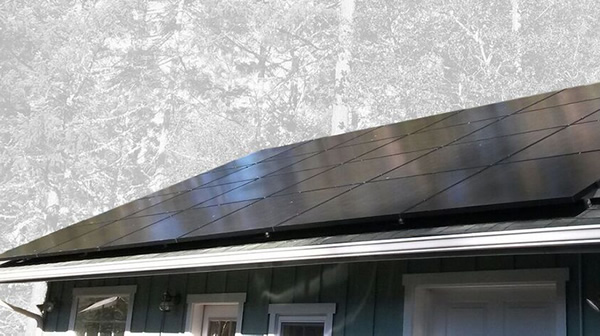
Enphase Energized Solaria PowerXT-AC Modules
This upgrade path involves the Enphase Energized Solaria PowerXT-AC Module, which has an Enphase IQ7+ microinverter integrated onto the Solaria module. (You can see an image of the Solaria modules on the left.)
The module has a power production of 295 Watts, substantially greater than what was available for legacy modules. The cost to the homeowner for this upgrade path is $469/panel, which includes the AC module, cabling, and the Envoy for monitoring.
Labor costs for this upgrade path are likely to be substantially higher, in part due to the need for new racking (the module dimensions are somewhat unusual - 63.8″ x 43.9″ - which could necessitate a racking change), changes in the sizing of the branch circuits, and the need to pull permits for the new system. Those factors are mitigated somewhat by the upgrade cost most likely qualifying for the federal 30% tax credit since it is an all new system, as opposed to the Microinverter Upgrade, that won’t.
Next-Generation Upgrade
Finally, the last upgrade option is to wait for the rollout of the Enphase IQ8 microinverter system. (You can read about what the IQ8 technology will provide here.) Unfortunately, there is no pricing information available yet for that upgrade path, and its availability is not until sometime in 2019 - probably the second quarter at the earliest.
What Happens if I do Nothing?
If your system is working fine, you don’t really have a need to do anything. However, these earlier microinverters came with a 15-year warranty, which means that more than half of that warranty period has expired. Moreover, particularly compared to the M190’s, the newest Enphase microinverters have significantly greater reliability (Enphase claims by an order of magnitude), so you would be upgrading to a more reliable product and extending your warranty protection by 25 years.
We will post again when we have more information regarding the Next-Generation, IQ8 upgrade. In the meantime, if you have questions about upgrading, please give us a call.
